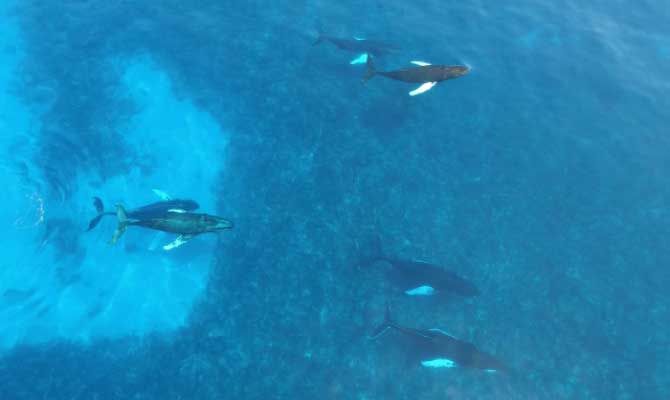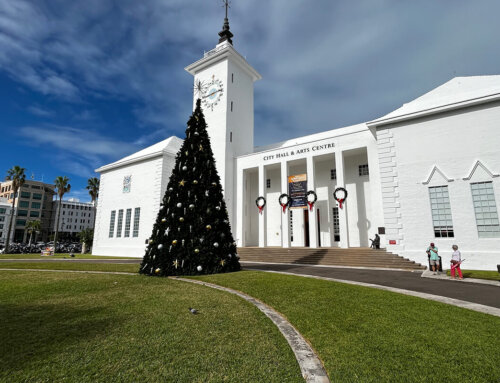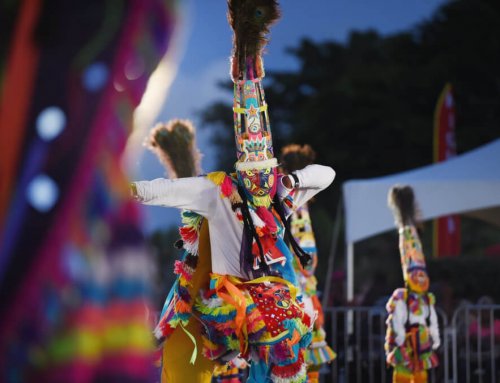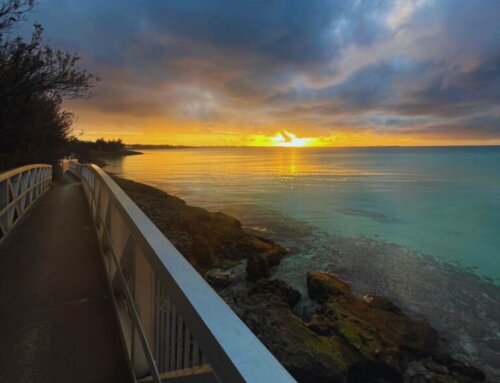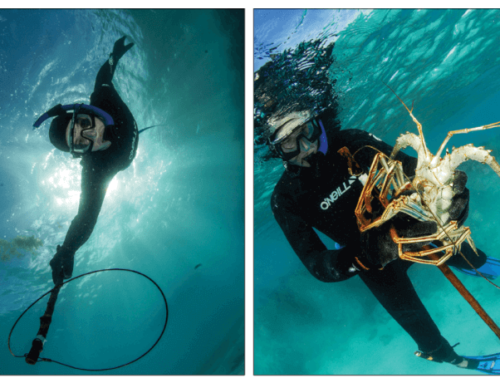Whale You Help? An Interview with Andrew Stevenson By Brigitta Wohlmuth
March and April are whale-watching months in Bermuda. You can spot them from land quite easily -along the south shore they come in as close as the reefs sometimes. One day, Andrew Stevenson and his daughter were taking a walk at Grape Bay when they witnessed one breach in the air. In awe, she asked him “Daddy, why do they do that?” a question that Andrew simply could not answer. He scratched his head for days, weeks, months… that incident sparked a curiosity in him that would eventually drive him down a completely unprecedented career path. For eleven years now, he’s dedicated his life to researching humpback whales in the wild, following them on their annual migratory route from the West Indies to the eastern seaboard of the USA and Eastern Canada. He has successfully identified 1,250 individual whales by the unique pattern on their fluke tails, making his catalogue of photographed fluke IDs one of the largest in the world.
With a permit from the Bermuda Department of Environmental Protection and a commercial license to fly a small, unmanned aircraft from the Civil Aviation Authority, his most recent data is a series of ultra high-definition aerial video footage, collected with the aid of his drone. “People who see my footage who have been out whale watching on boats are amazed that they were having the same experience but didn’t see any of what the aerial footage so graphically reveals” says Andrew. Many of his videos capture not just one, but a group of up to as many as seven whales interacting with one another. He shares them on his website bermudaaerialography.com, where the edited versions are evocative and serene, underscored with tranquil music.
“We’re seeing behavior here that we don’t see anywhere else, plus we’re seeing behavior here that we see everywhere else,” says Andrew. He believes that our unique position, a platform in the Mid-Atlantic Ocean, could help scientists unlock the secrets of these socially complex animals. Bermuda lies directly in the middle of the whales’ migratory path – add the fact that our crystal clear waters make spotting/observing them so much easier- and Andrew insists that Bermuda is sitting on a “gold-mine of information” of extreme importance to scientists around the globe. “The things that I have seen over the last 11 years reveals that the mid oceans are not just a migratory corridor for these whales. There are all kinds of activities going on here,” he tells me. From feeding to fighting to possibly even breeding- Andrew’s footage captures a whole range of unusual and new social behaviors. Earlier this year, Andrew found a young calf swimming with its mother. “This is the fifth year out of six years that I’ve seen a calf in Bermuda. That could be an indication that the whales are starting to give birth here again.” Bermuda used to be a birthing ground in centuries past, and although he cautioned it could be premature to say for certain, it’s quite possible that the whales are starting to recolonize Bermuda. Before whaling was out-lawed in 1982, hunters methodically would target the calves, who are less cautious and more curious than adult whales. Once they were able to harpoon the calf, the mother would hear the cries of her young and attempt to rescue it, allowing both whales to be caught and killed. After centuries of this practice, the humpback whales became endangered and subsequently stopped giving birth in Bermuda.
“The whales are hardwired a lot like humans,” he tells me; humpbacks are the only species of whales with long fins, like arms. They use their limbs much like us; to fight, to keep someone at a distance, or to embrace their young, but that is not the only similarity. He continues to explain: “Marine biologists now know that their brains are made up of the same components that humans have, those components where our sympathy, empathy, and feelings come from. So we physically know they have the same brain structure that we have that makes us very complex, complicated animals…. that makes us feel like we’re special”.
The message he wants to share with Bermudians and the wider world is to appreciate our oceans and respect the whales for the magnificent creatures that they are, they are not so different from us and they need our protection. “They are highly complex animals with emotions, you kill one animal and you upset the culture of the whole group of animals – like you would if you killed the matriarch of a group of elephants. They deserve to live in peace. They will come off the endangered list eventually, but then are we going to hunt them again? It’s entirely possible unless we have an appreciation of these animals, of how beautiful and complex they are.”
To learn more about Andrew’s work, or to find out how you can help, visit his websites at www.bermudaaerialography.com, www.whalesbermuda.com

